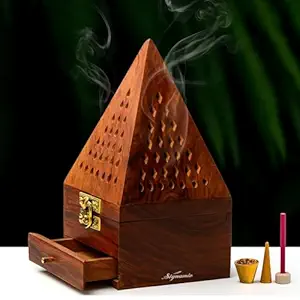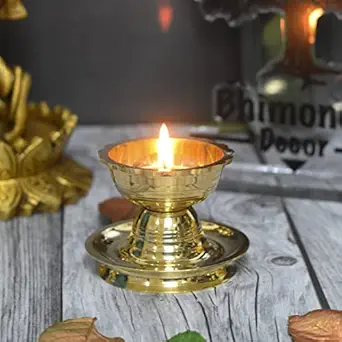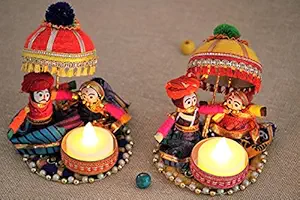હે શરદ પુનમ ની રાતડી રંગ ડૉલરિયો
માતાજી રમવા દયો ને રંગ ડૉલરિયો
હે રમીભમીને ઘેર આવ્યા રંગ ડૉલરિયો
માતાજી રમવા દયો ને રંગ ડૉલરિયો
માતા એ પિરચી લપચી રંગ ડૉલરિયો
મહી પડી એક અલ્યા ઘી રે રંગ ડૉલરિયો
હે શરદ પુનમ ની રાતડી રંગ ડૉલરિયો
માતાજી રમવા દયો ને રંગ ડૉલરિયો
હે શરદ પુનમ ની રાતડી રંગ ડૉલરિયો
સાસુજી રમવા દયો ને રંગ ડૉલરિયો
અમે રમીભમીને ઘેર આવ્યા રંગ ડૉલરિયો
સાસુજી જમવા દયો ને રંગ ડૉલરિયો
હે બાઇજી પિરચી માજરિયું રંગ ડૉલરિયો
મહી પડી એક અલ્યા તેલ રે રંગ ડૉલરિયો
હે શરદ પુનમ ની રાતડી રંગ ડૉલરિયો
માતાજી રમવા દયો ને રંગ ડૉલરિયો
Overview of "Sharad Punam Ni Ratdi Rang"
Title & Meaning
'Sharad Punam Ni Ratdi Rang' is a traditional Gujarati Garba song sung during Navratri nights, celebrating devotion, festivity, and cultural heritage.
Artist & Recording Details
Performed by various folk artists in Gujarat; recordings include both live Garba events and studio versions.
Genre & Occasion
Gujarati folk Garba, traditionally performed during Navratri, invoking Goddess Amba's blessings and festive energy.
Language & Dialect
Lyrics are in Gujarati, showcasing regional dialects, expressions, and references connected to Navratri customs.
Popularity & Versions
Widely sung in villages and cities; multiple live performances and recordings are cherished during Garba nights.
Lyrics Structure & Themes
Devotional Invocation
Lyrics start with devotion, inviting Goddess Amba to bless the dancers and participants of the Garba.
Repetitive Chorus
Repetitive chorus lines maintain rhythm and encourage group participation during festive dances.
Imagery & Symbolism
The lyrics are rich in imagery and symbolism, representing cultural rituals, colors, and joyous celebration.
Community & Togetherness
Emphasizes unity, faith, and collective celebration among participants during Navratri.
Emotional Resonance
Lyrics evoke devotion, joy, and enthusiasm, creating a spiritually uplifting and celebratory environment.
Musical & Performance Elements
Instrumentation & Rhythm
Traditional instruments like dhol, dholak, and claps provide lively beats that energize dancers.
Tempo & Dynamics
Song starts with moderate tempo and gradually intensifies, guiding the energy of the dancers.
Live vs Studio Renditions
Live performances have interactive elements and extended verses; studio versions are polished and concise.
Dance Cues & Movements
Lyrics provide cues for clapping, spinning, and synchronized steps in circular Garba formations.
Audience Participation
Encourages everyone to join in singing and dancing, making the celebration inclusive and communal.
Festival & Cultural Significance
Navratri Connection
A highlight of Navratri, enriching the festival atmosphere and spiritual engagement of devotees.
Spiritual Meaning
Represents devotion, faith, and surrender to Goddess Amba, seeking her blessings and protection.
Cultural Heritage
Preserves Gujarati folk music and dance traditions, passing them down through generations.
Community Bonding
Fosters unity and collective celebration through singing, dancing, and worship activities.
Joyful Celebration
Brings joy, spiritual enthusiasm, and cultural pride, enhancing the festive experience.
How to Use & Share
Translations & Transliteration
Providing translations helps non-Gujarati devotees understand and connect with the song’s meaning.
Audio / Video Embeds
Include live Garba videos and audio tracks to engage users and provide immersive experiences.
Printable Lyrics & PDFs
Offer printable PDF lyrics for personal, community, or educational purposes.
Performance & Dance Tips
Provide guidance on Garba dance steps, costume ideas, and performance timing for participants.
SEO & Social Media
Optimize with keywords like Gujarati Garba, Sharad Punam Ni Ratdi Rang, Navratri Garba; enable social sharing for wider reach.
'Sharad Punam Ni Ratdi Rang' is a traditional Gujarati Garba song sung during Navratri nights, celebrating devotion, festivity, and cultural heritage.
Performed by various folk artists in Gujarat; recordings include both live Garba events and studio versions.
Gujarati folk Garba, traditionally performed during Navratri, invoking Goddess Amba's blessings and festive energy.
Lyrics are in Gujarati, showcasing regional dialects, expressions, and references connected to Navratri customs.
Widely sung in villages and cities; multiple live performances and recordings are cherished during Garba nights.
Lyrics start with devotion, inviting Goddess Amba to bless the dancers and participants of the Garba.
Repetitive chorus lines maintain rhythm and encourage group participation during festive dances.
The lyrics are rich in imagery and symbolism, representing cultural rituals, colors, and joyous celebration.
Emphasizes unity, faith, and collective celebration among participants during Navratri.
Lyrics evoke devotion, joy, and enthusiasm, creating a spiritually uplifting and celebratory environment.
Traditional instruments like dhol, dholak, and claps provide lively beats that energize dancers.
Song starts with moderate tempo and gradually intensifies, guiding the energy of the dancers.
Live performances have interactive elements and extended verses; studio versions are polished and concise.
Lyrics provide cues for clapping, spinning, and synchronized steps in circular Garba formations.
Encourages everyone to join in singing and dancing, making the celebration inclusive and communal.
A highlight of Navratri, enriching the festival atmosphere and spiritual engagement of devotees.
Represents devotion, faith, and surrender to Goddess Amba, seeking her blessings and protection.
Preserves Gujarati folk music and dance traditions, passing them down through generations.
Fosters unity and collective celebration through singing, dancing, and worship activities.
Brings joy, spiritual enthusiasm, and cultural pride, enhancing the festive experience.
Providing translations helps non-Gujarati devotees understand and connect with the song’s meaning.
Include live Garba videos and audio tracks to engage users and provide immersive experiences.
Offer printable PDF lyrics for personal, community, or educational purposes.
Provide guidance on Garba dance steps, costume ideas, and performance timing for participants.
Optimize with keywords like Gujarati Garba, Sharad Punam Ni Ratdi Rang, Navratri Garba; enable social sharing for wider reach.


